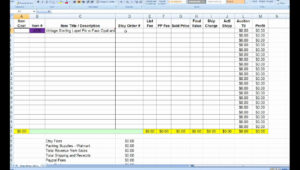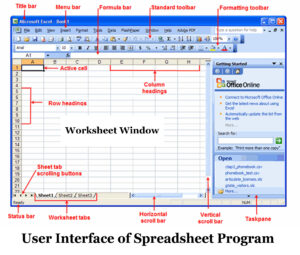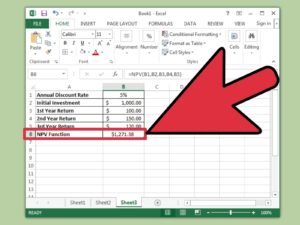Back to: Computer Science JSS 3
Welcome to class!
In today’s class, we shall be talking about the meaning and examples of spreadsheet packages. Please enjoy the class!
Meaning and Examples of Spreadsheet Packages
What are Spreadsheet Packages?

Imagine a digital canvas, neatly divided into rows and columns, waiting to be transformed into a powerhouse of organized data and insightful analysis. That, my friends, is the essence of a spreadsheet package. It’s a software application specifically designed to store, manipulate, and analyze data in a grid-like format. Think of it as a supercharged calculator on steroids, with the ability to handle complex calculations, organize mountains of information, and even tell a story through compelling charts and graphs.
Why are Spreadsheet Packages so Important?

Their superpowers lie in their versatility and functionality. Some of them include:
Data Organization: They provide a structured platform to arrange and categorize information, from simple grocery lists to intricate financial records.
Mathematical Prowess: They wield the magic of formulas, performing calculations automatically as you input data, saving you precious time and avoiding manual math mayhem.
Analysis Champions: They allow you to slice and dice your data through powerful sorting and filtering tools, unveiling hidden patterns and trends.
Visual Storytellers: They transform numbers into captivating charts and graphs, making complex data easily digestible and impactful.
Collaboration Kings: Many packages offer cloud-based functionality, enabling real-time teamwork and shared data access.
Examples of Spreadsheet Package:

Now, let’s meet some of the champions in the spreadsheet class:
Microsoft Excel: The undisputed heavyweight, Excel boasts impressive functionality, a vast library of formulas, and seamless integration with other Microsoft Office tools.
Google Sheets: The cloud-based challenger, Sheets offers real-time collaboration, automatic saving, and accessibility from any device.
LibreOffice Calc: The free and open-source contender, Calc provides a robust feature set and compatibility with Microsoft Excel files, making it a budget-friendly alternative.
Apple Numbers: Designed for Mac users, Numbers focuses on a sleek interface and intuitive features, making it perfect for casual spreadsheet users.
Applications of Spreadsheet Packages
The beauty of spreadsheets lies in their endless possibilities. Here are just a few examples:
Personal Finance: It can be useful to track your income and expenses, create budgets, and plan for the future.
Business Applications: Useful to analyze sales data, manage inventory, and forecast business performance.
Scientific Research: Helps to organize experimental data, perform calculations, and visualize results.
Project Management: Track tasks, allocate resources, and monitor project progress.
Education: Analyze student data, create interactive learning tools, and visualize complex concepts.
Whether you’re a seasoned data analyst or a curious beginner, it is important to embrace the power of spreadsheet packages. They are not just software; they are tools to conquer chaos in data, unveil insights, and tell compelling stories with your data. So, dive in, explore, and unleash your inner spreadsheet ninja!
We have come to the end of today’s class. I hope you enjoyed the class!
In the next class, we shall be discussing the uses of spreadsheet packages.
In case you require further assistance or have any questions, feel free to ask in the comment section below, and trust us to respond as soon as possible. Cheers!
Question Time:
- Define the term “spreadsheet package” in your own words.
- Briefly explain three key features of spreadsheet packages.
- List two advantages and two disadvantages of using spreadsheet packages compared to manual calculations.
- State four different types of data you can organize and analyze using a spreadsheet package.
- Name two popular examples of cloud-based spreadsheet packages.
